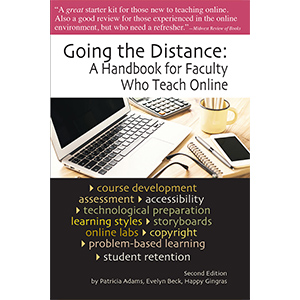Using Technology for Good and Evil

As a student, I had what could be best described as a strained relationship with online instructional software. As an instructor, that relationship still exists, but I’m beginning to warm up to it, and a better understanding of the basic features are what appear to be winning me over. I have yet to teach a purely online course, but my classes are becoming increasingly hybrid as I use the online tools to post a copy of the syllabus, semester work schedule, formatting walkthroughs, and articles for discussion. As a writing instructor, I have my class provide short written responses on a weekly basis to supplement the major essays, and my vertebrae have celebrated the decision to create dropboxes for online submission rather than lug home stacks of papers.
Most of my hesitation is based on a fact I’ve discussed before, that a diverse class will eventually reveal a few students who have relatively minimal experience with technology (My Love/Hate Relationship With Diversity). I’m fine with going through the steps on how to complete simple tasks, but revisiting the process, often more than once, seems to me a colossal waste of class time. And for the record, the bluntness of my previous statement isn’t an attitude I display in front of my students; in fact, I hesitate to share it here for fear that one of the more curious among them may stumble upon this blog. Ah well, such is the nature of freely available Internet content, but that is a topic for another day.
So by now you must be wondering what all this has to do with Evil, since I’ve touched lightly on the Good slowly winning me over. My own touch of evil sprang from good intentions (don’t they all?), and what I did was use the tech at my disposal to give my students a healthy dose of “Big Brother” scare with a harmless moral lesson. Picture the illegitimate love child of Orwell and Barney the Dinosaur if that will help—or not, if it’s too disturbing. I’ll understand.
I like to begin the semester with an op-ed piece or current news article—usually something light and easy to talk about—in order to get everyone used to talking and to warm up those brains for the more in-depth scholarly articles to come. I’m sure I can say with confidence that when giving a reading assignment, an instructor can assume some of the students simply won’t bother to do it. Predicting this, I posted the first reading assignment for the first week of class—a two page editorial published only a few days prior with plenty of easily accessible statements just begging to be discussed—and I activated the user tracking function. By the beginning of class, I could see that fewer than half the students had accessed the article. Needless to say, I was not happy. I started the class right off by disclosing how many people accessed the link (although not who) and explaining just how unacceptable it is for college students to ignore an assignment, much less not read it.
Current events tend to be a welcome supplement to the textbook, which has thus far been regarded almost unanimously as “dry” and “completely boring” by my past sections. I fully understand that reading about writing is not a thrill-ride experience for many, which is why I try to ease their suffering with a complementary real-world example. I normally don’t set traps, but since so few of the students had even bothered to click the link (which is literally what the tracking report tells me, so I have no clue if those who did access the article printed or read it), I can’t see myself not activating the user tracking to keep tabs from now on.
Comparing this particular experience with stories of what other instructors have allegedly done to lazy students, I feel like my situation is relatively low-key—perhaps even too lax. The real test will come when we discuss the textbook and I’m left with nothing but my ability to recognize a con job. There’s always the trusty pop quiz.
About the Adjunct: Erik Hanson completed his MA in English with an emphasis in Creative Writing from the University of Northern Iowa, where he also earned his BA in German, during which time he spent one year studying abroad in Austria. Thus far, his teaching portfolio consists of developmental writing and composition courses. In those rare moments when he is not in class or tutoring English students, he can usually be found hunched over his keyboard with a cup of coffee, working on short fiction or developing his novel.








